How to Feed & Maintain your Sourdough Starter
You’ve done it! You’ve created a living batter filled with wild yeast. Now let’s see how to feed & maintain your sourdough starter.
If you haven’t made your starter yet, visit this post to see how to make a sourdough starter from scratch.
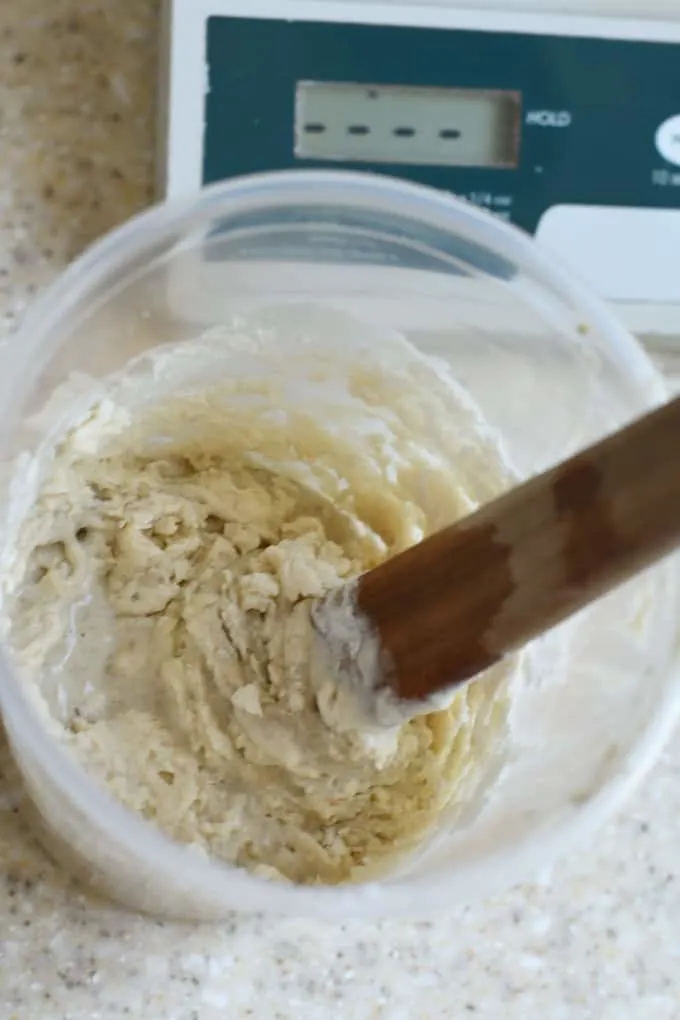
Right off the bat I’m going to say that there are a million ways to feed, maintain and use a sourdough starter. In fact, after you’re done reading this post, you should read through my instructions for How to keep a small sourdough starter to see of that method would work better for you.
I am going to outline for you how I maintain my sourdough starters. I tend to have a fairly relaxed attitude towards the process. It works for me and I think my approach can work for you if you don’t bake bread every single day (and even if you do).
At the end of the post you’ll find a how-to card that lists the ingredient amounts and steps to follow each time you feed your starter.
But first I’m going to give you all the how’s and why’s and try to answer any questions you might have.
Tips for using and maintaining your sourdough starter:
- Since I don’t bake every day, I keep my starters (yes, I have 3) in the refrigerator.
- If I’m making a 2-day recipe (most of mine are) I take the starter out of the refrigerator early in the morning of the day I’m making the dough. If the starter is inactive I feed it right away and it should be ready by early afternoon.
- If I’m making a 1-day recipe, I’ll take the starter out the night before and feed it if it’s inactive. It should be ready to use first thing in the morning.
- When the starter is cold from the refrigerator, I feed the starter using fairly warm water, warmer than body temp. The warm water will jump-start the cold starter.
- If the starter has been fed within the last 2-3 days, and has been refrigerated, you can probably go ahead and use it without feeding.
- If you’re not sure if the starter is active, drop a dollop into a bowl of water to see if it floats. If it does, it’s ready for baking.
- I write all my sourdough recipes to use 8 oz of active starter. After using 8 oz of starter in the recipe, I’m left with 4 oz of starter, exactly the right amount for feeding.
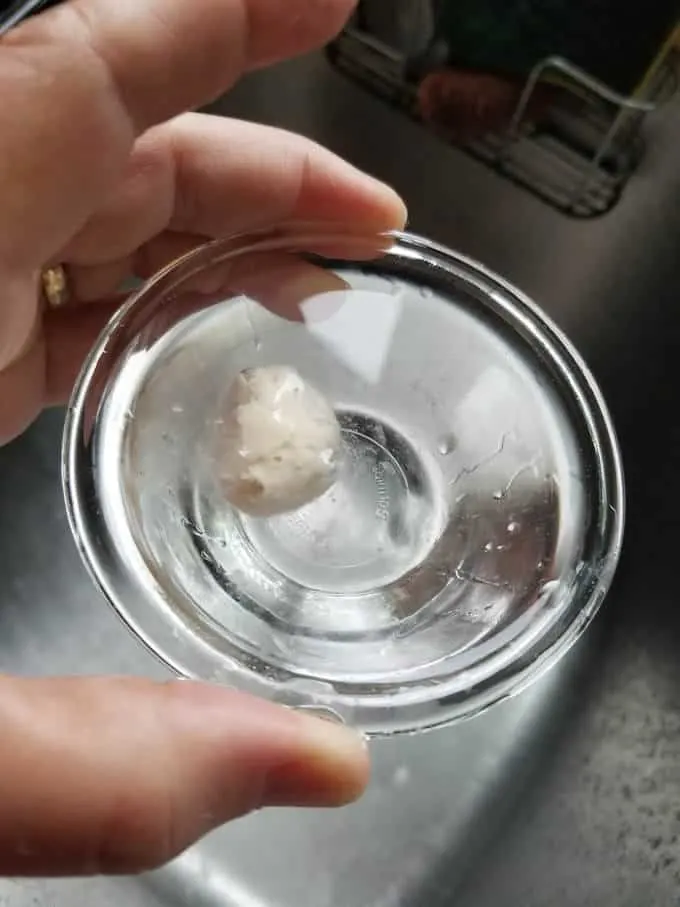
Schedule for feeding your sourdough starter:
- Your starter needs to be fed about 1x per week if refrigerated, and every day if left at room temperature.
- Generally, about 5-6 hours after feeding my starter is ready. The time may vary based on room temp, dough temp, etc. The starter should have doubled in volume and started to recede and/or pass the float test.
- I take my starter out of the refrigerator once a week for feeding, even if I’m not baking. Although, truth be told, I often go longer than a week between feedings and I haven’t killed it yet.
- Did you know you can dry your sourdough starter? Dried starter can be kept indefinitely.
- After you’ve removed the portion of starter for baking, feed the starter again and leave it at room temperature for 3-4 hours before putting it back in the refrigerator.
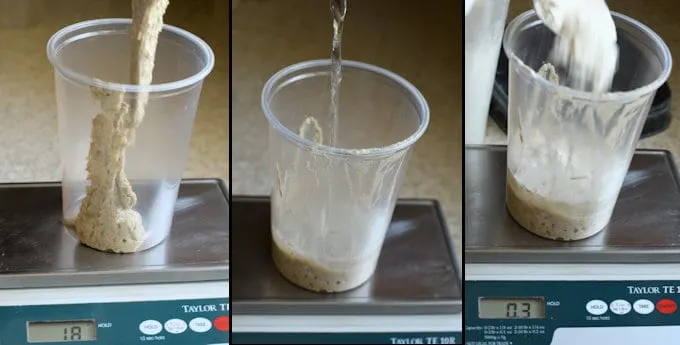
FAQs about feeding & maintaining Sourdough Starter:
Honestly, I’ve gone longer than a month without feeding my starter and I haven’t killed it yet. Give it a feeding and see if it wakes up. If it’s alive, keep feeding it until it is reliably doubling in size within 4-5 hours.
If you go more than about 2 weeks between feedings, you might want to give the starter 2-3 feedings before using. A starter that hasn’t been fed for weeks will be quite sluggish and your dough won’t be as lively.
If your starter was fed a day or two before, it’s possible to use the starter straight from the refrigerator. Give it a float test to make sure it’s active. The dough may take a little longer to ferment since the temperature of the dough will be colder.
It’s called “hooch” and don’t worry, your starter is still alive. Just stir that water back into the starter before feeding. Again, you might need 2 feedings to completely revive the starter since it’s been quite dormant.
To maintain your starter at 100% hydration it is best and most accurate to weigh your ingredients. If you’re just a little bit off every time you feed, eventually, your starter could be thrown out of balance.
No problem, use the amount of starter called for in the recipe. Then weigh out 4 oz of the remaining starter for feeding and discard the rest.
If you continually feed the starter without discarding, you’ll end up drowning in starter.
Yes, even if the discard is not active enough for baking bread, you can add it to many other recipes as a flavor and texture enhancer.
Unless you’re going away for an extended time, your starter should be just fine for a couple of weeks in the refrigerator. If you’ll be gone really long-term, put the starter into the freezer or dry it. Frozen or dried starter will need several feedings to rejuvenate.
If you appreciate this detailed information, I’d really appreciate a 5-star review.
How to Feed Sourdough Starter
Ingredients
- 4 oz unfed sourdough starter
- 4 oz all purpose flour
- 4 oz water (room temperature)
Instructions
- Weigh 4 oz of your unfed starter into a clean container. Discard the extra starter (see note)4 oz unfed sourdough starter
- Add the flour and water and mix until combined. Set aside at room temperature.4 oz all purpose flour, 4 oz water
- The starter is ready to use when it has doubled in volume and a small spoonful floats when dropped into a bowl of water. This generally takes 4-5 hours but the time can vary based on dough temperature and room temperature.
- If you do not plan to bake with the starter on the day it is fed, refrigerate 3-4 hours after feeding.
- Feed refrigerated starter weekly. If you go longer than a week without feeding, you may want to give the starter two feedings before using.
Would you like to save this recipe?
As an Amazon Associate and member of other affiliate programs, I earn from qualifying purchases.

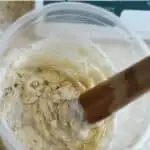





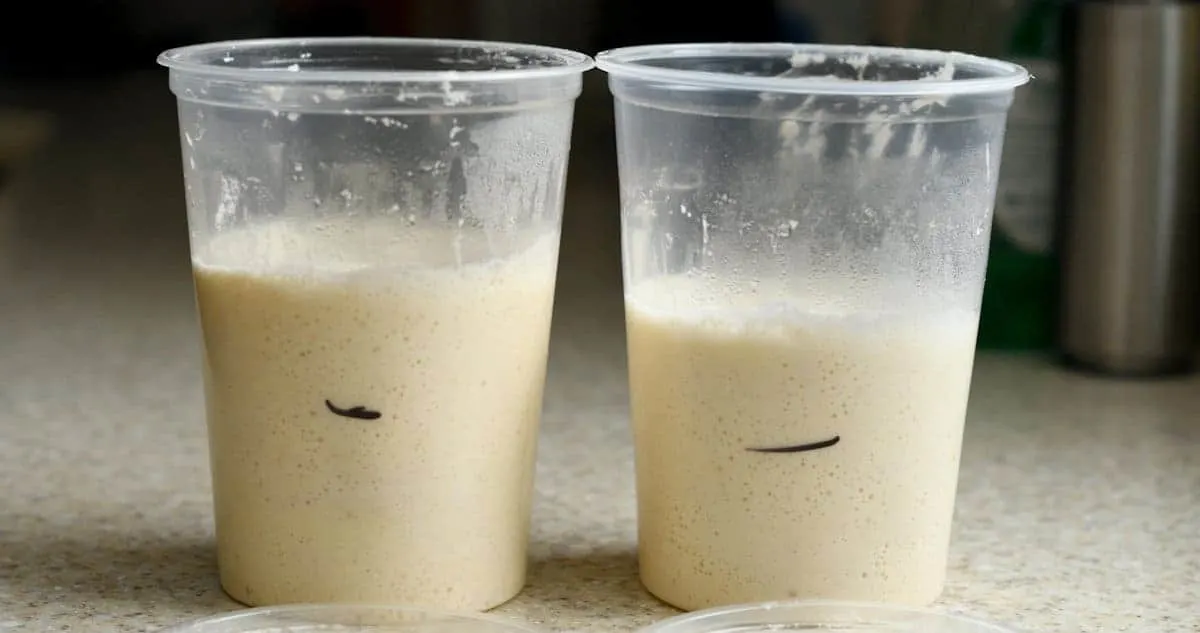
I have an heirloom starter, but it seems VERY runny. Everything I’ve made has been overly dense, which leads me to believe that it’s not active. In fact, I just tried to activate and after 8 hours, it failed the float test.
How do I thicken up the starter?
Have you been feeding with equal weights of starter-water-flour? How much starter do you have? You could take just an ounce of starter and feed it with an ounce of water and an ounce of flour and see how it does.
This was great and helpful! I just got a starter from a friend that has been doing this a year. This put it in simple terms I can come back to if I need extra help! Thanks!
That’s great. Enjoy your sourdough journey.
Hi, I’ve just started my sourdough starter journey. A friend gave me their starter and I have fed it everyday. It’s 4oz in starter and I add in 4oz of flour and 4oz of water. Today is day 3. The starter has risen but not double in size. There are bubbles and it smells a bit tangy (quite nice actually). I leave it out everyday in the kitchen on top of the fridge and feed it once a day.
Do I continue feeding it 4oz everyday until it doubles? Or do I make the feeds more frequent e.g. twice a day? Is it ok to leave out until the starter is active and established rather than store in fridge? Many thanks
Well, it might double and then begin to collapse without you noticing. Is there a significant rise even if it’s not quite doubled? As long as it’s actively rising every day and smells nice and yeasty it should be good to use. I like to use mine right after it has finished rising and is beginning to collapse back. There’s lots of activity at that point. There should be no need to feed more than 1x per day. If you’re not ready to bake with it I would go ahead and put it in the refrigerator until you’re ready. But since it’s already active I would go ahead and get baking. Have fun!
Hi, I read you have to keep starter in a container with a tight fitting lid so I’ve been using a kilner jar. You mention previously it should have a loose fitting lid. Is a kilner jar not suitable? Thanks for all the info.
I use a loose fitting lid when growing the starter. Once the starter is established I keep it in a plastic deli container with the lid fitted tightly. I keep it refrigerated between baking sessions since I don’t bake every day.
Does the starter have to be stored with a lid on or just a loose cover
I use a plastic deli container and put the lid loosely on top. Any sort of loose cover will work.
Does the starter have to be stored with a lid on or just a loose covet
While growing the starter I use a loose fitting lid. Once the starter is established I keep it with a fitted lid. I refrigerate mine between baking sessions since I don’t bake every day.